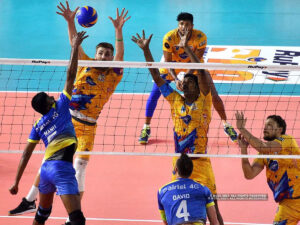Back to: Primary Health Education Primary 5
Welcome to today’s class!!
We are thrilled to have you in our class!!
In today’s Physical Education Class class, we will be focusing on Revision
Revision

As students, if there is a moment that you can look forward to to refresh your memory before writing your exams, is the Revision period. And because Revision is a very important step in fostering adequate preparations for examinations, it is important to enjoy it.
Let’s take a look at some of the topics we’ve covered so far.
Rhythmic Activities
Rhythmic activities are combinations of physical movements with sounds, beats, or music. Rhythmic activities rely on an internal or external rhythm used for self-expression, exercise, demonstration of physical ability, and expression of culture.
Designing or selecting a rhythmic activity should include the following components of rhythmic activity:
- level of physical ability and any means of changes necessary
- interest in activity
- length of time required to learn the activity
- use of appropriate music, song, or beat
Did you know that Rhythmic activities have been taking place for thousands of years? Rhythmic activities trace back to many years ago, with sports such as gymnastics that combined movement with the use of rhythm. This created a form of physical expression with strength and ability.
In summary, Rhythmic activities allows the combinations of sounds and beats along with movements of the body can enable people to:
- exercise
- physically express themselves and their personalities
- break down social barriers by including different levels of learners
- promote friendship, community, and fun
Long Jump
The goal of long jump is simple – to cover the highest possible distance with a horizontal jump. However, a deep dive into the details reveals the long jump is one of the most technically difficult track and field events to master.
In long Long Jump, jumpers start with a running start, propel themselves in the air at a designated launching point, also called the take-off board, and try to achieve maximum distance in the air before landing inside a sand pit.
So, the entire course consists of three parts. The runway, the take-off board and the sandpit to land in.
In official events, the runway measures 40m in length. It is similar to a running track used in sprinting, mid-distance or long-distance running events and is made out of a rubberised material laid over concrete.
At the end of the runway lies a 20cm wide take-off board. The runway and the take-off.
The end of the take-off board is marked with a foul line. While taking off, the toe of the jumper’s shoe needs to be behind the foul line for a particular jump to be deemed legal. Crossing the line results in a foul jump and doesn’t count.
After being airborne, the jumper lands in the sandpit placed on the other side of the take-off board.
The distance covered, from the edge of the take-off board to the indentation in the sand (made by any part of the athlete’s body while landing) closest to the take-off board, is measured.
The entire jump needs to be completed within one minute after the long jumper steps into the runway. Long jumpers are allowed to wear spikes if they prefer but the sole of their shoe cannot be more than 13mm thick.
At events, an athlete is often given a fixed number of attempts and the one with the longest distance covered, is counted as the best.
In the final rounds of big competitions like the Olympics or World Championships, athletes generally get six jumps. A set of three trial round jumps are held to select the finalists, who then get three more jumps to win medals in the final.
Evaluation
What is Long Jump?
Reading Assignment
A person who participates in Long Jump is called what?
Weekend Assignment
Identify two rules in Long Jump.
Volleyball

Volleyball is a sport played by two teams on a playing court divided by a net. There are different versions available for specific circumstances in order to offer the wideness of the game to everyone. The object of the game is to send the ball over the net in order to ground it on the opponent’s court, and to prevent the same effort by the opponent.
The team has three hits for returning the ball (in addition to the block contact). The ball is put in play with a service, hit by the server over the net to the opponents. The rally continues until the ball is grounded on the playing court, goes “out” or a team fails to return it properly. In Volleyball, the team winning a rally scores a point (Rally Point System). When the receiving team wins a rally, it gains a point and the right to serve, and its players rotate one position clockwise.
There are six players on court in a volleyball team, who each must rotate one position clockwise every time their team wins back service from the opposition. Only the three players at the net positions can jump and spike or block near the net. The backcourt players can only hit the ball over the net if they jump from behind the attack line, also known as the three-meter line, which separates the front and back part of the court.
Evaluation
What is a Volleyball game?
Reading Assignment
How many players are allowed to participate in a Volleyball game?
Weekend Assignment
Explain two differences between a Volleyball and Football game.
Personal Health – Care of The Body Parts

The human body is amazing. It is always working and growing, changing food to fuel and fighting illness and germs. As children, your parents take care of your bodies by making sure that you have everything you need to grow and maintain good health. As children get older and become more mature, they take over some of the responsibility for taking care of their bodies, and they learn that bodies need several different kinds of care to function well.
Here are ways to care for your body parts:
- Eat a healthy diet with food from all of the food groups: dairy, fruits and vegetables, grains and protein. Food provides vitamins and minerals your body needs, like calcium and iron. Start each day with breakfast, and choose healthy snack food between meals. Limit the amount of sugar in your diet, and drink water.
- Clean your body by taking a bath or shower. Wash your entire body from head to toe, including your face, and wash your hair regularly. A clean body is healthier, smells fresh and makes you feel good about yourself.
- Brush and floss your teeth after meals and snacks. If you take good care of your teeth, they can last your whole life. Healthy teeth have fewer cavities and less plaque build-up. Keep your breath fresh by keeping your teeth and gums clean.
- Control germs by washing your hands often with soap, especially if you or someone near you is not feeling well. Wash your hands before meals, after using the bathroom, after taking out the garbage and after blowing your nose. Wash your hands before setting the table or touching food, and cover your mouth and nose when you sneeze or cough.
- Exercise your body every day by finding ways to stay active. Play games that involve jumping, running and playing. Take walks, go swimming or help out with household chores. Exercise and physical activity keep your heart healthy, strengthen bones, help you to stay in shape and improve your thinking processes.
- Get enough sleep. Your body needs sleep to get ready for the next day. Your brain needs sleep so you can concentrate, remember and solve problems. While you are asleep, your body is growing, finding new ways to fight illness and building strength.
Evaluation
Mention five parts of your body and identify their functions.
Reading Assignment
Give two reasons why it is important to care for your body.
Weekend Assignment
Identify six ways you can care for your body.
School Health Programme
School Health Programme in Health education is an important tool in achieving better health for children and the whole school. Developing good standards and regulations that include ethical decisions and sensitive issues is important for education quality.
A Healthy School Environment means all the things that are planned, organized, and done to ensure that the environment is safe and healthy for all the members of the school community.
The idea behind this is that the school environment promotes good health.
Everything about the school environment should promote good health, both physically and in every aspect.
When you have an environment that promotes health, the students can learn better. They can put in their best.
So, it means that schools have to take care of the environment in a certain way.
The school community should be protected from excessive noise, heat, cold, and dampness.
Also, the Programme ensures the buildings are well constructed and follow the standards and specifications. Then, provide adequate toilet facilities for use. Safe water and sanitation facilities should be provided for use, as well as proper drainage and waste disposal facilities.
By doing so, these also provide safe recreational and sports facilities; proper fencing of the school.
In summary, components of school health programme include these:
- Healthful school environments.
- School feeding services.
- Skills-based health education.
- School health services.
- School-home and community relationships.
Evaluation
What is the School Health Programme’s objective?
Reading Assignment
Write two importance of School Health Programme.
Weekend Assignment
Identify any five School Health Programmes in your school.
We hope you enjoyed today’s class. In our next class, we will be talking about Food And Nutrition
Let us know your thoughts and questions in the comment section, and we will attend to them as fast as we can.
